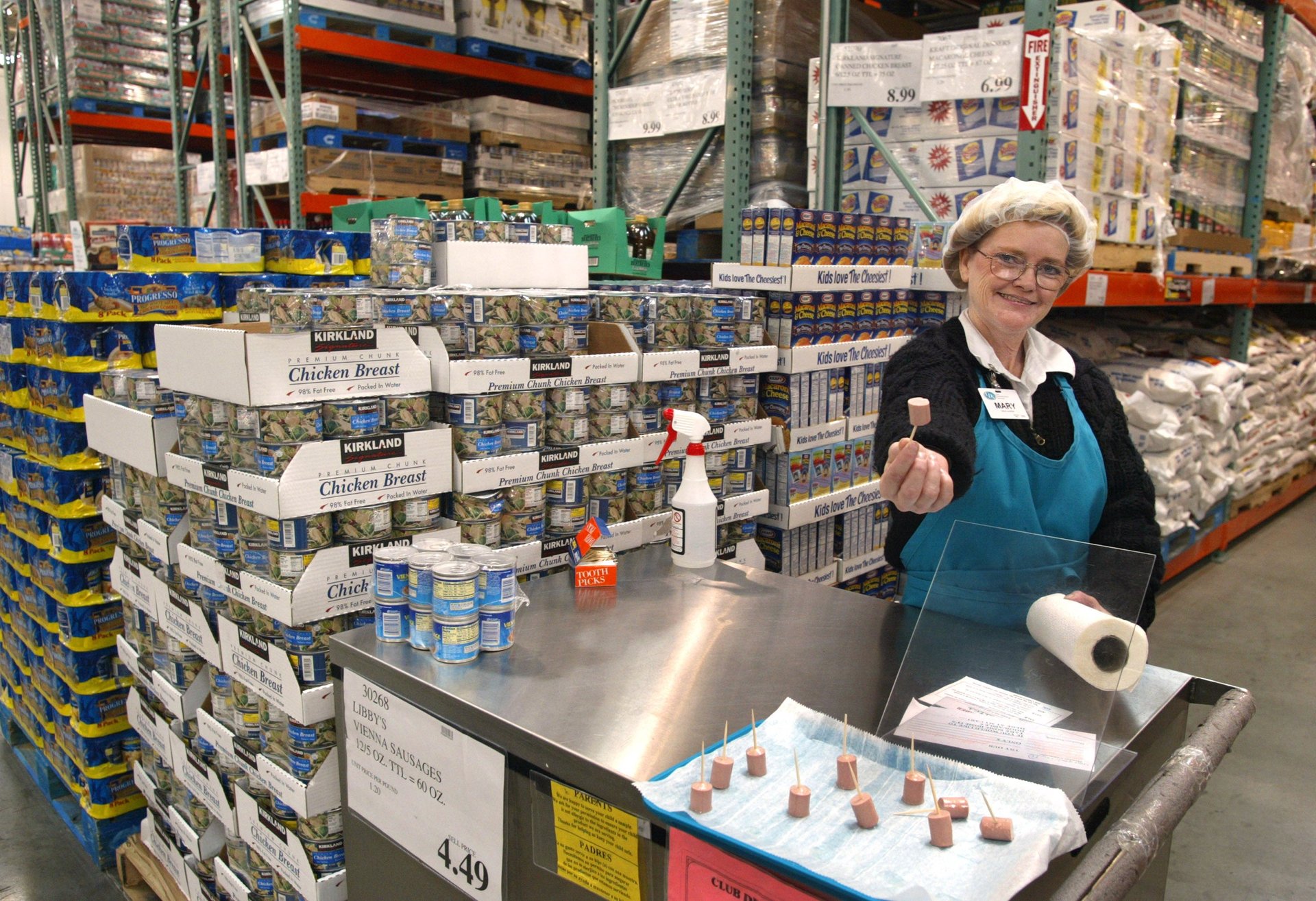What to look for in Costco’s earnings report amid slowing consumer demand
As sales growth slows, the company considers increasing membership fees

Costco is expected to report its weakest growth in three years on Thursday (March 2), following slumping sales in the retail sector, as rising living costs force consumers to be more selective about their spending habits.
This would mark the seventh straight quarter in which Costco’s sales growth fails to keep up with past performance, a trend experienced by other retail giants like Target and Walmart. Executives at those companies have warned investors of continued uncertainty in coming months as well as weakened demand, as the consumer confidence index continued its slide in February.
Costco’s membership growth remains strong, as the company is expected to add another 480,000 paid subscribers, but membership fees only account for 2% of the company’s overall revenue. During Costco’s last earnings call, chief financial officer Richard Galanti said an increase in the membership fee was “a question of when, not if,” but that the company was in no rush to do so, opting for a wait-and-see approach. The last time Costco membership fees rose was in 2017.
Costco’s stock price is down 5% in the last year, but still beating the S&P’s consumer discretionary sector, which posted a 19% loss. After the company beat its earnings forecast in December, its shares gained 1.5%.
Even amid inflation and slowing sales, Costco’s CEO has repeatedly confirmed that the company will not raise the $1.50 price of the famous hot dog and soda combo. The meal has been the same price since 1985.
Inflation and the retail market
Continued high inflation rates have made retail’s future difficult to predict. Despite increases in consumer spending and a robust job market, most retail companies are predicting weak growth in the next year. So, how are the country’s biggest retailers doing?
🏹 Target: Target had a rough 2022, with profits falling a staggering 90% between the first and second fiscal quarters last year, mainly caused by record inflation affecting consumer demand. Despite Target beating earnings expectations in the last fiscal quarter, profits have continued their downward trend, with a 60% decline year-over-year.
📦 Walmart: The retail giant issued a weaker-than-expected earnings forecast for 2023 last week, predicting that consumer spending would start the year strong but decline in coming months, producing sluggish growth for the company. The CFO said shoppers are holding back on big discretionary purchases as grocery prices remain high.
🏠 Home Depot: The country’s largest home improvement company missed revenue expectations for the first time since 2019, blaming a decline in lumber costs, which are down 50% year-over-year. The company has remained relatively stable amid inflation, a housing market slowdown, and an overall downward trend in consumer spending.
Charted: Costo share price 2022-2023
“The way to think about [higher food costs] is dry grocery and consumables are stubborn mid-double digit, and those are going to just be with us for a while. And it will get a little confusing because you’ll probably hear inflation numbers that start to sound lower, but you’ll have to remember that’s on a 2-year stack. So if inflation in dry grocery and consumables is only 3% or 5%, that’s on top of 15%. And that’s still a problem for the customer.” – Walmart CEO Doug McMilon, expressing long-term doubt about consumer purchasing power.
Is petty theft actually affecting retail’s bottom line?
Target’s CFO Michael Fiddelke recently made headlines by saying an increased rate of retail theft cost the company hundreds of millions of dollars in lost profit last year.
“[Inventory shrinkage] was certainly a headwind [last year],” Fiddelke said. “We know we’re not alone in seeing elevated levels of shrink and organized retail crime driving some of that theft.”
According to a study by the National Retail Foundation, there has been an uptick in stolen goods, with the report finding that companies lost roughly $94.5 billion to theft in 2021, up from $90.8 billion in 2020. The same survey found that roughly a third of retailers described organized retail crime as becoming more concerning in recent years.
Companies like Target, Walgreens, and CVS have responded by adding increased security and locking up items that are easy to shoplift, like toothpaste and deodorant.
However, Walgreen recently bucked the trend, with CFO James Kehoe saying that the company had invested too much in “largely ineffective” private security, adding that it plans to reduce some of its anti-theft measures.
Related stories
🪥 Walgreens realized theft isn’t as big an issue as litigation costs